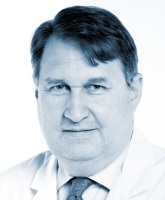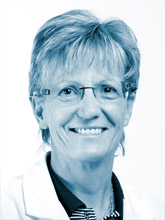Reconstructive and plastic surgery

The Department of Plastic, Reconstructive and Aesthetic Surgery at Saint-Luc University Clinics offers a full range of surgical reconstruction. It is therefore able to treat many pathologies through an integrated, multidisciplinary and personalised approach.
Plastic surgeons at Saint-Luc University Clinics work in close collaboration with many other specialist doctors: oncologists, dermatologists, digestive and thoracic and ENT surgeons, etc. Through this multidisciplinary approach, patients are able to benefit from the latest, integrated and personalised treatments.
Plastic surgery and oncology
“In oncology, for example, we are directly involved in the treatment of numerous tumours: head and neck cancers, breast cancer, melanoma, etc”, explains Professor Benoît Lengelé, head of Saint-Luc University Clinics Department of Plastic, Reconstructive and Aesthetic Surgery. “First we deal with the mutilating excision of the cancer and then immediately reconstruct the operation site in order to restore both its form and function. Our aim is to ensure that surgical treatment of cancer is minimally incapacitating to the patient and to preserve the patient’s quality of life.”
Electrochemotherapy
In the treatment of skin tumours, Saint-Luc University Clinics Plastic Surgery Department is the only department in Belgium, and one of the few in Europe, to offer the possibility of using electrochemotherapy to treat multiple scattered cancerous lesions under the skin.
This effective and minimally invasive treatment is carried out under short general anaesthesia. It combines a short infusion of chemotherapy with localised electric pulse activation at each tumour nodule site. This limits the toxic action of the product used solely to the tumours being treated and so spares the patient the general secondary effects of chemotherapy. Indications for this treatment are highly targeted but it can prove effective on certain melanomas and in particular forms of breast cancer.
(Micro)surgery and loss of substance
Following an accident, illness or surgery, a patient may present with a loss of substance in an area of the body with complex anatomy. To reconstruct this area, plastic surgeons remove tissue similar in appearance or constitution from another part of the patient’s body.
- In the majority of cases, this tissue is adjacent to the area for reconstruction and is skilfully modelled to replace the missing section. It is used, for example, in the reconstruction of the nose, lips and eyelids.
- Where the neighbouring area does not offer sufficient tissue or the tissue is not adequate for perfect reconstruction of the damaged part of the body, tissue from other areas is removed (from the abdomen or limbs, for example) and transplanted at the repair site. Such transplantation requires reconnection of the transplant tissue blood vessels to those in the receiving area. These vessels are only millimetres in diameter so the procedure requires great precision and is carried out using an operating microscope. This is known as reconstructive microsurgery. These techniques are used in reconstruction of the mouth, tongue, cranium, jaws and limbs. Microsurgery also forms an integral part of breast reconstruction after cancer treatment.
The added value of this wide skill group lies in the fact that it offers a full range of reconstructive treatments. This is the approach to treatment followed in all King Albert II Cancer Institute centres of excellence.
Vascular anomalies
Tumours and vascular malformations (angiomas) are developmental anomalies that can affect any tissue of the body containing blood vessels (arteries, veins, and capillaries) or lymph vessels. The most visible of these affect the skin (port-wine stains, for example), while others may infiltrate the mucous membranes, muscles or deep organs.
These complex conditions require a multidisciplinary and personalised approach.
The highly regarded Vascular Malformation Centre at Saint-Luc University Clinics offers a full range of treatments and welcomes patients from every corner of the globe. First, the Centre is able to offer precise diagnosis of each (rare or common) malformation thanks to the expertise of its staff of world-renowned doctors hyperspecialising in the treatment of vascular anomalies and the use of medical imaging and molecular genetics. The Centre is then able to offer all the latest treatments, from the least invasive techniques to the most complex surgery. “Treatment often involves a multidisciplinary approach combining specific drugs, interventional radiology to drain the affected vessels, and surgery”, explains Professor Laurence Boon, coordinator of Saint-Luc University Clinics Vascular Malformation Centre. “Our evolving understanding of the causes and mechanisms behind these anomalies also enables us to develop therapeutic trials of new molecules to help our patients for whom, up to now, we were unable to offer any effective treatment.”
Other sectors of the Plastic Surgery Department
- Lip and Palate Centre
- Breast Surgery
- Wound and Sore Surgery
- General Aesthetic Surgery.


